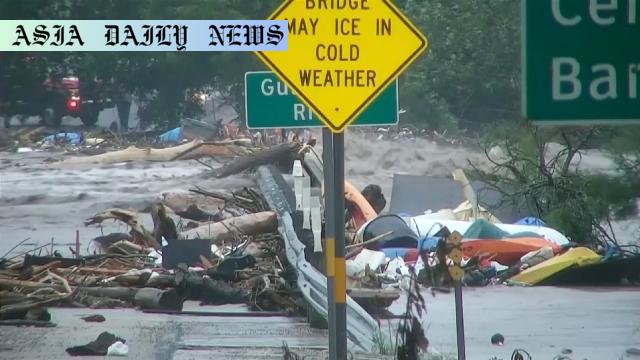Flooding has led to a death toll of 43 in Texas, with 20 people, including children, still missing after torrential rains and river overflow.

Record-Breaking Floods Overwhelm Texas
The southern US state of Texas is reeling after catastrophic flooding claimed 43 lives and left more than 20 individuals, many of them children, unaccounted for. Torrential downpours on Friday caused the Guadalupe River to overflow, unleashing unprecedented destruction. The rapid surge in water levels left many residents vulnerable, striking in the dead of night when people were sleeping. Emergency teams have been working tirelessly to rescue survivors and recover those still missing.
According to local reports, several children who had been camping along the river have not been located, heightening fears for their safety. The flooding is one of the worst natural disasters to hit southern Texas in recent years. Authorities have acknowledged the immense challenge posed by receding floodwaters in their ongoing rescue and recovery efforts.
Human Toll and Recovery Challenges
Authorities confirmed that at least 43 individuals, including 15 children, lost their lives due to the floods. With the vast scale of destruction, emergency services have extended the parameters of their search efforts. As families await news about their missing loved ones, the sense of loss and devastation grips affected communities. Between volunteer groups and professional rescue teams, the operation to locate those missing reflects the resilience of Texas in the face of despair.
In addition to human casualties, the floods have caused widespread infrastructure damage. Roads are impassable, homes are underwater, and power outages persist, compounding the challenges faced by those attempting to rebuild their lives. With weather forecasts predicting more rainfall, officials are alerting residents to remain vigilant and prepare for potential evacuations.
Ecosystem and Environmental Impact
Beyond the immediate human toll, the environmental impact of the flooding is becoming increasingly evident. Contaminated water supplies, displaced wildlife, and agricultural disruption are among the many challenges that Texas faces in the aftermath of this disaster. Experts emphasize the importance of evaluating and restoring the damaged ecosystems to prevent long-term environmental degradation. This includes efforts to clean debris, rebuild the regions’ biodiversity, and address potential health and sanitation concerns.
Resilience and preparedness will be key as Texas moves towards recovery. The floods are a stark reminder of the need for improved infrastructure, disaster management strategies, and climate-change-resilient planning to safeguard communities against future emergencies.
Commentary
The Human Cost of Unchecked Natural Disasters
Flooding, as seen in Texas, serves as a harrowing reminder of nature’s unpredictable force. The devastation—the deaths, the disappearance of children, and the long-term community impacts—underscore the fragility of human life in the face of natural calamities. The fact that several of the missing are children from a summer camp along the Guadalupe River makes this particular incident all the more heart-wrenching. Such disasters highlight the necessity of robust emergency plans, especially in areas prone to severe weather conditions. We must recognize that preparedness saves lives.
As Texas mourns its 43 dead and continues the search for the missing, one must consider the silent victims of such events—the survivors. Families have lost loved ones, children have been separated from their parents, and entire communities must rebuild emotionally and physically. The stories of heroism and resilience that come out of such disasters are a testament to the indomitable human spirit. Yet, it is essential we not overlook the serious questions that arise about climate resilience and whether enough has been done to mitigate disasters of this scale.
A Call for Systematic Change
While the outpouring of aid and solidarity is commendable, it is essential that we address the systemic roots of such disasters. Climate change plays an undeniable role in the increased intensity of storms and flooding events around the world. Heightened rainfall, rising sea levels, and overburdened rivers are becoming increasingly common. Policymakers, urban planners, and environmentalists must collaborate to prioritize climate resilience efforts, build smarter infrastructure, and ensure timely dissemination of disaster warnings to protect vulnerable populations.
The tragedy in Texas is a wake-up call, not just for the state but for all of us. Every death and every account of human suffering carries a responsibility for action. Let us use this calamity as an opportunity to advance knowledge, policy, and community engagement to save lives in the future.


